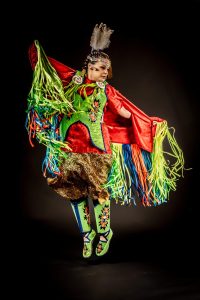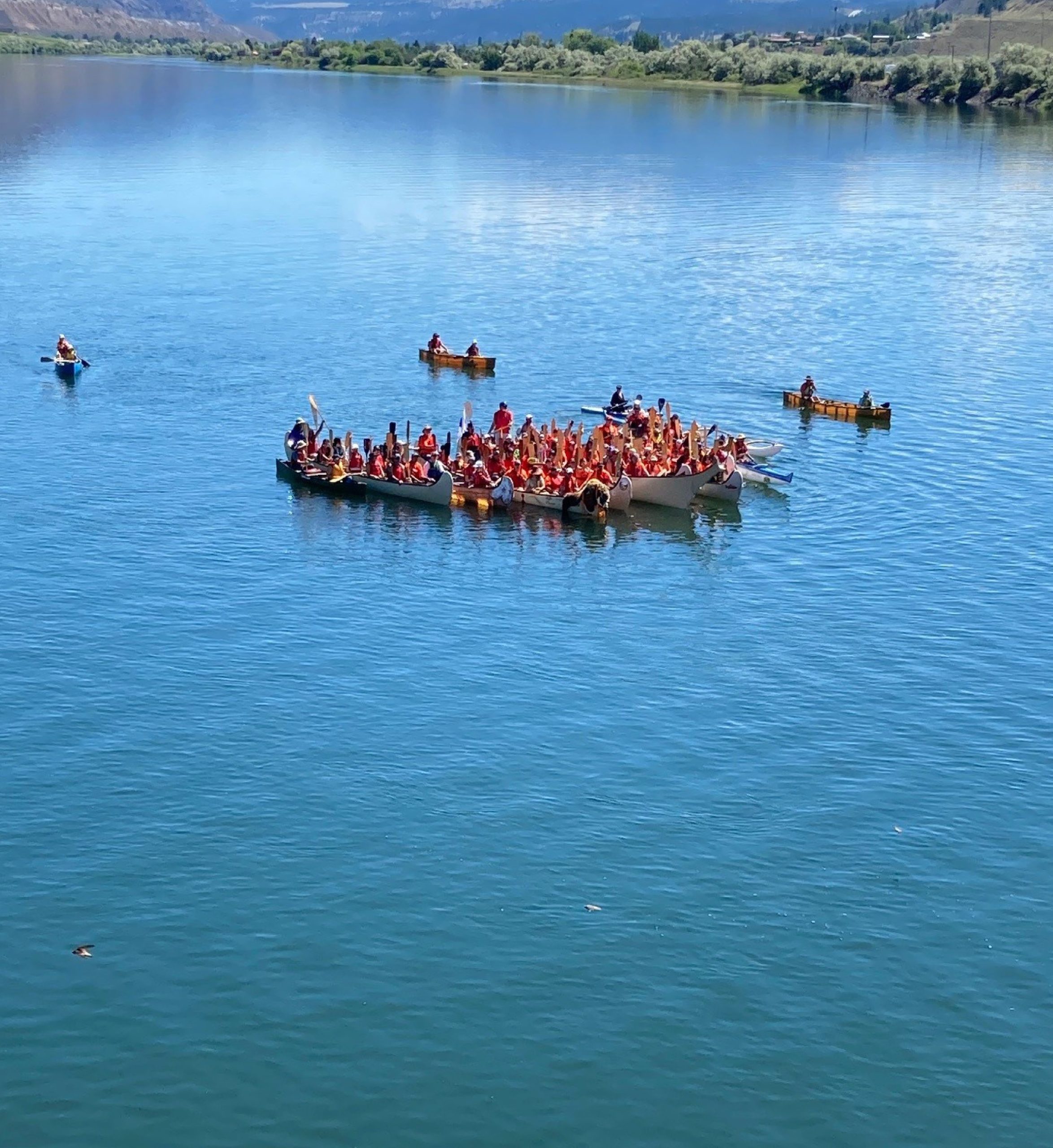Q: What brought you to the agency?
A: The day I moved here, there was all these job postings and people were like, ‘You need to apply for this job. You need to apply. You’re perfect for this job.’ I said, ‘I don’t want a job. I have my career.’ And they insisted, so I applied and I got the job. The Creator sends you down a path for a reason, and I said, ‘OK, Creator, I trust where you’re taking me.’ And I’m really glad in the role as Transition Coordinator. When I see the young people, and they hear my story is similar, I said, ‘OK, I know my Creator put me in this role.’ And I don’t know how long I’m here. I don’t know what the path or the journey because I’m a listener, and I really trust where the Creator guides me.

Q: Tell us a bit about your background.
A: I went through a lot of stuff when I was a kid. I needed to leave my Métis community in Northern Saskatchewan so I hitchhiked to Alberta at 12 years old and found my dad. He was shocked when I was there. He’s my greatest teacher and my best friend. I cannot live far from him. But he was on this journey to healing his experience with Residential Schools. Then he brought me to Mission, which wasn’t the ideal place to be living. He was with a partner and I left him and I’ve been on my own ever since I was 13. That’s why being here, it’s familiar. I see the young people here and I’m like, ‘That was me.’ I know what you’re doing. I know where you’re going. I know what that feels like.
My First Nations workers in school would always tell me, ‘You’re gonna do something with your life. Right now it’s hard. But you’re not this person that you’re being on the street.’ Because, of course, I had to protect myself do all these things, trying to have a tough exterior. But they always told me, ‘You’re gonna do something.’ And I said, ‘I’m not even good enough to do anything.’ Yvonne Chartrand, who I call my mom, is one of my many moms on this journey. She runs a Métis contemporary dance company called “V’ni Dansi”. She’s the first one who saw something in me.
Q: Tell us about dance and how it became such a big part of your life.
A: I’ve always been a dancer since I was little. They say I came out dancing. And in my community in northern Saskatchewan, a Métis settlement, I was told as a kid to dance like the elders. I had to dance in the parades. I had to dance in the community dances. I never got to play but I now know they were preparing me. It all really started when I met Yvonne, who was friends with my dad. She asked my dad if I was a dancer, because she had seen me jumping on the trampoline. And she then asked me to come and ‘jig’ (jigging is a traditional Métis dance that has its roots in French, Irish and Scottish dancing) in one of her shows, and then she invited me for a couple other shows, and then from there it kind of organically happened.
Q: And that led to bigger opportunities?
A: Yeah, that’s when it got bigger. And I started to go on stages and to conferences, and be invited to talk to groups and schools. And I’m a part of a modeling agency that just started, Supernaturals Modeling. But even before that, people would ask me, ‘Hey, Maddy, want to come and model my clothes?’ And it’s mostly for Indigenous designers. And I said, ‘Sure why not?’ For me, everything I do is about sharing the energy, even through a photo. I know they say we should live in a world where we don’t need to be resilient, but we do, unfortunately. So it’s to show that strength through the images and show young Indigenous youth from my community that if they want this, they can do it. I was once a little bush kid who didn’t think I was gonna do anything. And I’m doing it all.
Q: You said that dancing saved your life more than once. How?
A: Anytime when I was a kid, when there was things going on, I was the kid dancing at the dance parties that used to come to the north, or the community dances. I was the kid that was out there by myself. For me, it was my freedom. No trauma could come near me. No sadness, no, nothing. It made me so happy. And it helped me through all of my traumatic childhood experiences. And then into my teen years I didn’t dance as much because I was homeless. Dancing through all of that, it was the only time I felt free and I felt normal. I wasn’t the foster kid. I wasn’t the street kid. I wasn’t the messed up kid. I was just me. I was Maddy the Dancer.
And then into my 30s, I ended up with cancer, and had a major surgery at 35 and I danced through it. I have a documentary coming out called Dancing Through. And it’s about how I dance through the whole experience and how it’s been my medicine. It has been amazing.
LINKS:


